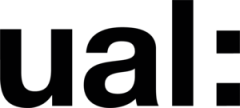This week, I mainly started organizing all the scripts and models for the animation projects I prepared last semester. At this initial stage of an animation project, it’s essential to polish the animation script. I’m currently deciding between two story scripts: one from last semester that features elements of Chinese martial arts and combat, and the other about a boy with psychological issues, trapped within his mind and experiencing horrific scenes.
The considerations are the production duration, feasibility of the animation workflow, and the difficulty of integrating relevant materials:
The first script involves multiple characters and a Chinese martial arts theme, which might require more preparation time. The second project, being a solo project, could be completed more quickly and allow for better execution of all processes, resulting in superior animation quality. Ensuring the animation workflow can be completed is crucial, as last year we faced issues due to insufficient early-stage confirmations of whether the animation and rendering could support the entire project, leading to necessary alterations of the original animation. To avoid this situation in individual animation projects, I plan to create a test shot after completing the storyboard to verify the feasibility of the workflow.
Ensuring material integration involves incorporating every scene model, texture, and lighting parameter within a single project file. The more complex the scenes and lighting, the more challenging the integration. Therefore, the second project seems more suitable for my FMP project.

Regarding the storyboard creation, I strive to ensure the shot composition, smoothness of transitions, and completeness of the story. I hope to depict the character’s oppressive and distorted inner world through visual and sound effects. I also segmented each animation shot into several parts in the storyboard to facilitate seamless animation production later. At this point, we need to have a precise understanding of the required actions and consider the most visually appealing camera angles (though I haven’t started production yet, pre-designing can make the entire animation process more coherent).


